Succulent heart is one of the sweetest plants you could find among all plant species. It has become a trend to grow these plants across the world and they would greatly fit in as perfect houseplants.
So, if you are also interested in growing one of them and wondering how to care for them, this article is for you.
Many people tend to grow succulents’ hearts due to the heart shaped leaves it has. In addition to that, you could easily propagate them as well. They would be handy as gift items for a lover or a good gardner.
Many people tend to grow these plants due to the aforesaid features of the plant. Hoya Kerrii is the scientific name of the succulent heart.
Succulent heart also known as valentine hoya, sweetheart hoyas or Hoya succulent.
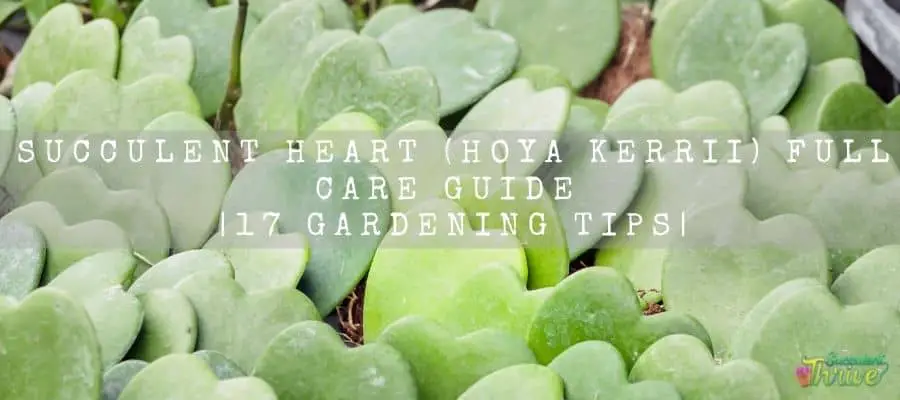
How do I identify a succulent heart or Hoya succulent?
You could identify the succulent heart easily by looking at their heart shaped leaves. That is the highlight of these plants.
One look care guide
| Botanical Name | Hoya Kerrii |
| Common Name | Valentine Hoya Sweetheart hoyas Hoya succulent |
| Plant Type | Succulent |
| Mature Size | 10 inches |
| Sun Exposure | Full sunlight to partial sunlight |
| Soil Type | Well-draining |
| Soil pH | 5 to 6.5 |
| loom Time | Spring |
| Flower Color | Creamy white |
| Hardiness Zones | 11a to 11b |
| Native Area | Southeast Asia |
| Toxicity | Nontoxic |
| Average price | 25 USD |
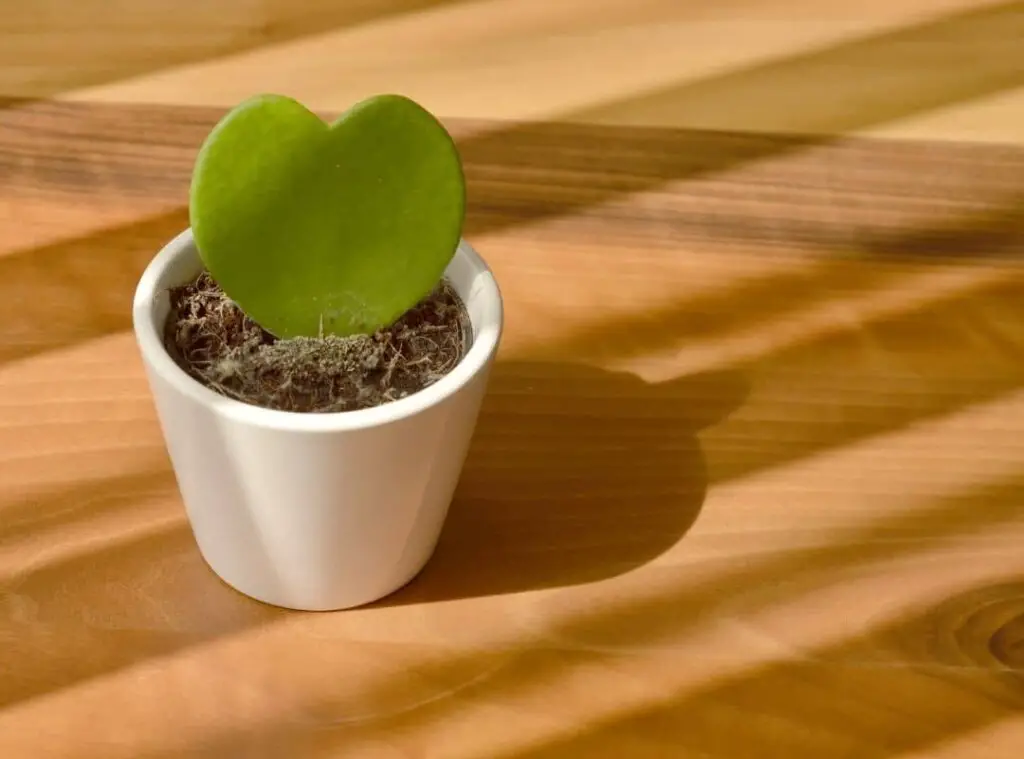
How do you take care of a succulent heart?
Size
Succulent heart could usually rise to 10 inches in height. Usually, they are grown in 4 inches and 6 inches pots. If you wish you may buy a single leaf in a small pot as well.
Growth
These plants generally have a slow to moderate growth rate. In case, if you are growing a single leaf in a small pot, they would not show any growth at all. Best would be to conduct propagation for them.
Light Requirement
In terms of light requirement, sweetheart hoyas would thrive well in bright natural sunlight. You could grow them wherever you wish.
However, you need to make sure that they get sufficient sunlight. This is very crucial when looking after these plants well.
However, you should be vigilant to not expose them for intense direct afternoon sunlight as it could create sunburns in the plants.
On the other hand, if you are experiencing winter weather conditions, best is to shift them somewhere where they can get enough sunlight.
The exposure for low light levels could slow the growth rate of these plants.
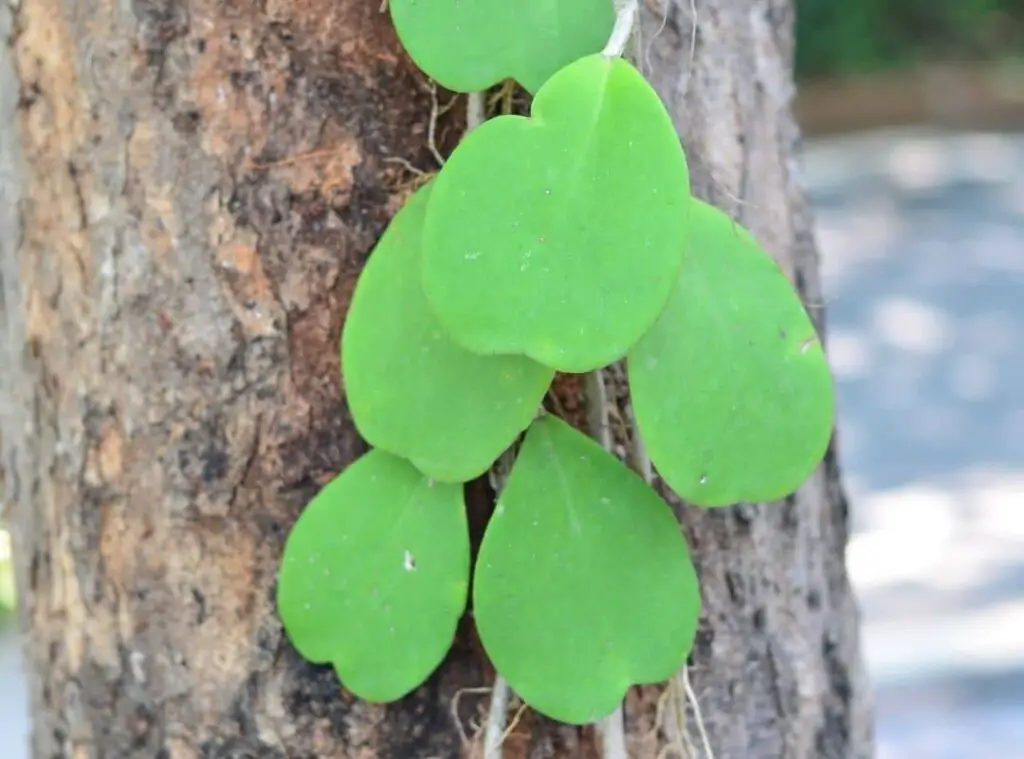
Temperature and humidity
When it comes to temperature, these plants would perform well in average to warm room temperatures (65-80 degrees Fahrenheit).
They could thrive in temperatures up to 50 degrees Fahrenheit / 10 degrees Celsius. Refrain in placing these plants near cool drafts and near heat / ac vents as well.
In terms of perfect humidity, sweet hoyas would prefer to have moderate humidity levels. These plants are endemic plants in Southeast Asia where they will usually have a humid climate.
However, they would thrive well usually in room humidity levels where they will have dry air.
If you ever feel like your sweetheart plant is in stress as they are running short of humidity, you could fill the saucer with pebbles and with water.
You simply have to place the plant on the pebbles. Further, I would encourage misting them a couple of times weekly as well.
Is it cold hardy?
These plants are not cold hardy plants. They could withstand high temperatures such as 70 Fahrenheit and 80 Fahrenheit. In fact, you need to avoid exposing them to temperatures below 50 degrees Fahrenheit.
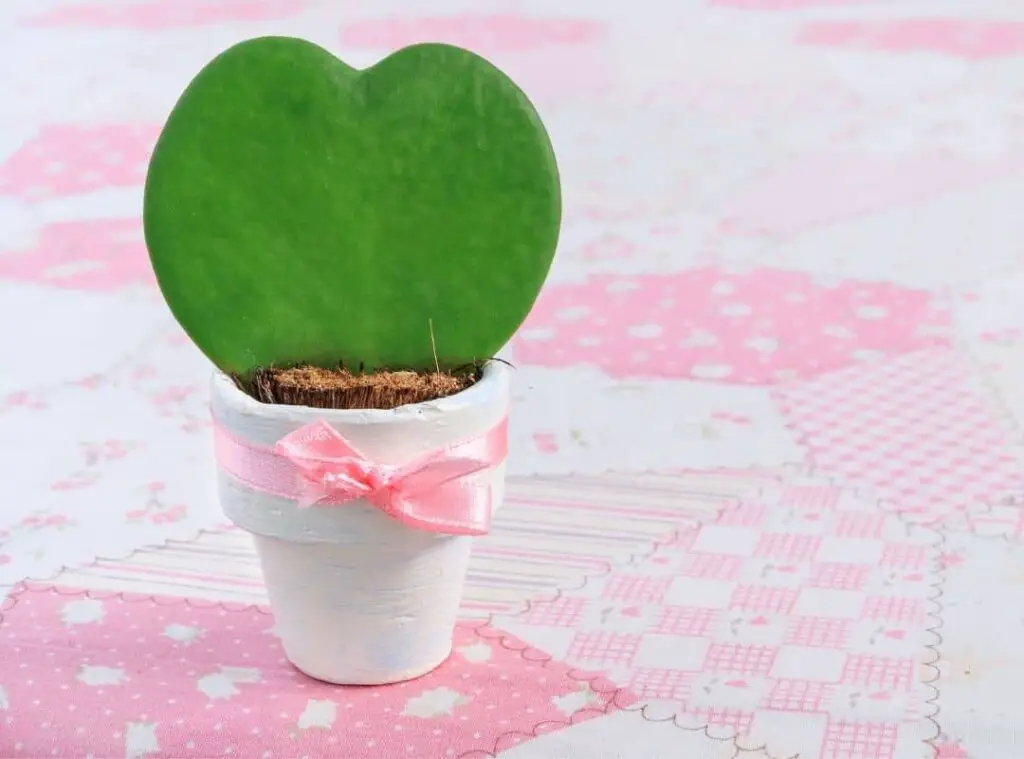
Zone
Sweet hoyas preferred USDA hardiness zones are 11a to 11b: from 40 °F (+4.4 °C) to 50 °F (+10 °C).
Watering Requirement
Sweet Hoyas watering requirement is quite similar to most of other succulents. Literally you need to start watering them, if you spot their soil is dry only.
Sweetheart plants usually have fleshy, waxy leaves. So, when watering them during summer, you could consider watering them once every 7-9 days.
On the other hand, you could water them once every two – three weeks when watering them during the winter season.
Also, you will have to change the frequency in watering depending on the pot size, soil type and on your home environment as well.
Succulent heart plants do not prefer to be in the humidity all the time. As such you need to be careful not to over water them. It is always best to under water them than to over water.
Simply over watering could create worse repercussions for the plant when compared to under watering.
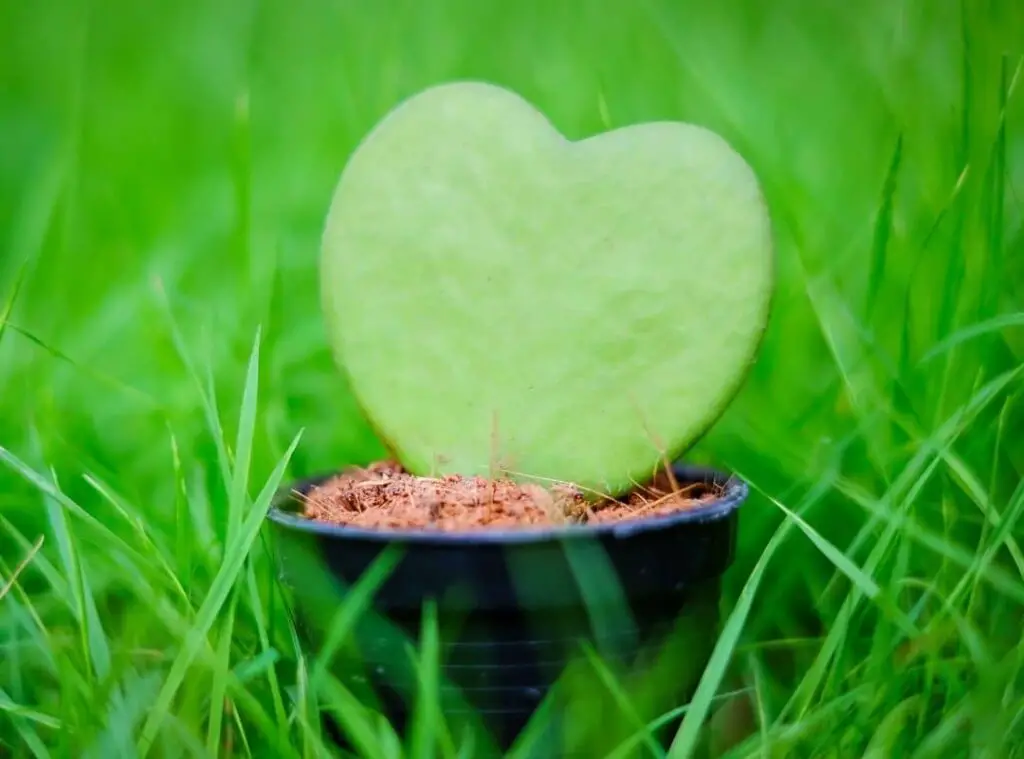
Soil Requirement Type / pH
succulent heart plants would require a good quality potting mix which is ideally loose and well-draining.
Best is to grow them in an orchid potting soil mix, sphagnum moss, coconut husk or even in cactus mix.
Alternatively, you could also create a potting mix on your own by combining soil, perlite and orchid bark.
It is important that your soil mix is a well-draining one unless the excess water could retain in the soil mix and create root rots.
As such you need to provide better drainage for the Hoya plants than the regular plants.
Pot size Potting and Repotting
Usually, succulent heart plants are grown in 4 inches – 6 inches sized pots. Avoid growing them in too small pots as that would affect the growth rate of these plants.
Further, you could grow these plants in plastic pots or even in terracotta pots. However, if you grow them in plastic pots, you could place them in outer pots.
Further, when you do this, you need to check whether your plant has finished draining after watering them. After that only you could put them back in their pot.
Growing them in terracotta pots is the best as they would not retain extra moisture in the pot. Further they will dry out faster as well.
Moreover, ensure that your pot has enough draining holes. That is very important when selecting a proper pot to grow these plants.
In terms of repotting the sweethearts’ plants, the best time to conduct it would be spring or summer.
Further if you live in warm climates, you could consider doing it even in early fall. You do not have to do it every year since they are a slow growing set of plants.
They could grow tight in their pots for a few years. Usually, you could report them once every four to five years.
To repot them, you simply have to take them off gently from the pot and get rid of the older soil. Check whether the plant is in good health and see whether there are any rotten parts.
After that you could plant them back in a fresh well-draining soil mix.
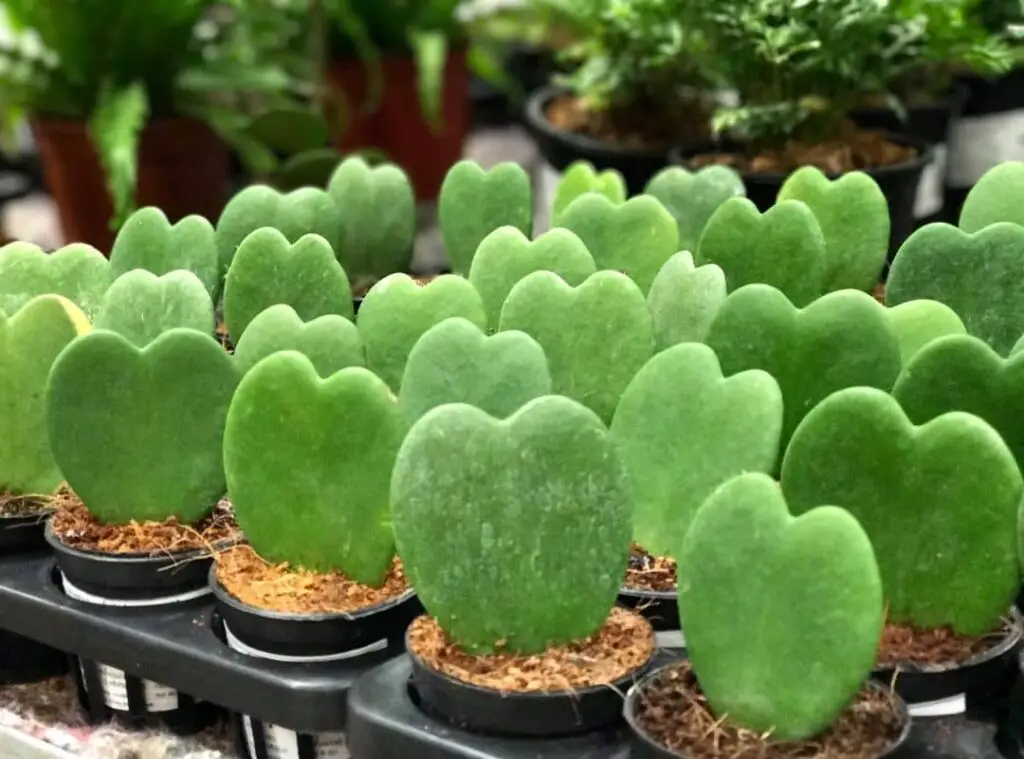
Where to Plant
You need to grow these succulent heart in a place where they can gain adequate sunlight as they are fond of sunlight.
When you grow them indoors, best is to locate them in a brightest sunny spot at your home, it could most probably be a sunny window where it will get at least six hours of direct sunlight in the morning and shade during the rest of the day.
Fertilizer and time of year
Succulent heart are not so dependent on fertilizers. They would require a little feeding if the plant were small or if it is growing as a single leaf.
You could feed them two times per year maximum. In case if you have a succulent heart plant which is older or if your single leafed plant is forming shoots, you could consider feeding them a little more.
However, you need to refrain in feeding them during late fall or in winter since that is when these plants go into dormancy.
Literally that is when they are resting. In case if you end up over feeding these plants, it will create fatal impacts on the plants and would further create salt build ups in the plants.
Not only that but also, it would create burns in the roots as well. On the other hand, you need to avoid feeding them when a plant is going through stress.
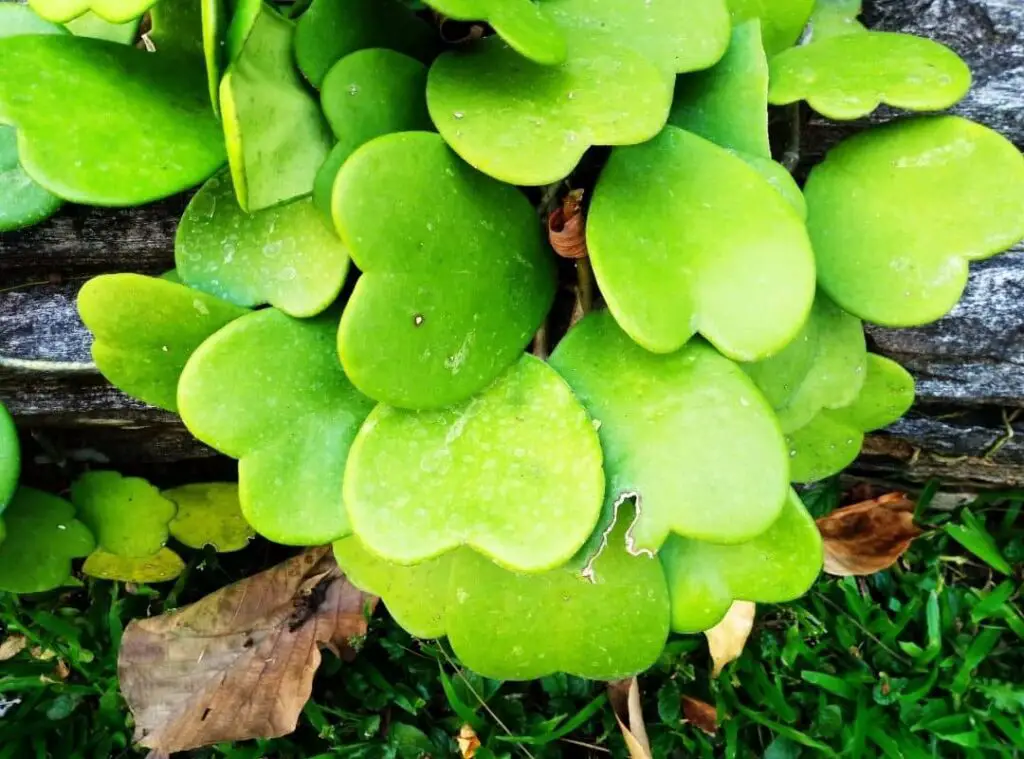
Dormancy
Winter is their dormancy period. These plants usually grow in spring to early fall. During their dormancy, you need to avoid exposing them for direct sunlight and infrequent watering as well.
Can they be toxic to pets?
As the name implies, Sweethearts’ plants are not toxic for pets. As such if you are a pet lover, you do not have to worry about growing them.
Handling the plant
It is important that you fulfil its basic growing requirements when growing them. Simply you have to expose them for enough sunlight and water them as aforesaid.
Moreover, you need to grow them in a well-draining soil mix as well.
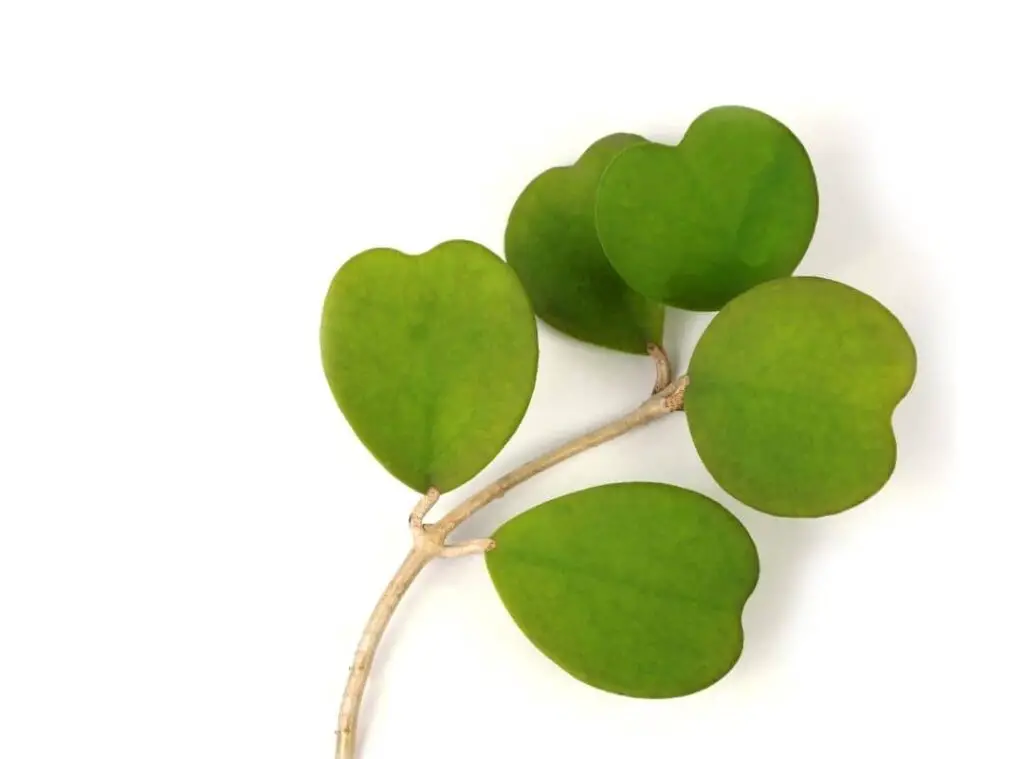
Common bugs and illness issues
Shriveling leaves – Under Watering could mainly attribute this condition. Having said that, if you are confident that you watered properly, you need to observe the roots and check whether the roots have rotten.
No flowers – if your succulent heart is matured and if it is at least 2 years old, they would tend to produce flowers. However, if they do not flower, that is also an issue. However single leaf plants would not bloom anyway.
No growth – These plants usually have a slower growth rate. As such you need to be extra patient when growing them.
Root rots – Sweethearts plants do not wish to be in waterlogged conditions as it could create root rots in the plant. As such you need to water them appropriately so that you could avoid this situation. Root rot could be risky since it could even turn out to be fatal on your plant.
Pests’ attacks – you could come across pests’ attacks if you are growing these plants indoors. They are quite porn to get infected with mealybugs.
They are white cotton substances which you could usually spot hanging around the nodes and underneath the leaves as well.
To remedy them you could simply wipe them with water. In addition to mealybugs, you could come across scales and aphids attacks as well.
It is important that you remedy them at the very moment you spot these pests. Unless they could multiply and create more damages to the plant. Further they could spread to other plants as well.
succulent heart plant benefits
You could use them as tabletop plants. You may consider placing them on shelfs, buffets, credenza etc. Alternatively, you could consider growing them as hanging plants as well.
Although it is not a benefit you can use heart succulent as a valentine gift. Their heart shape makes them a perfect valentine gift.
Further you could grow them as great houseplants as well.
Flowering
Succulent heart produces beautiful flowers. Their blooms are usually waxy and tend to take a star shape. Those flowers would usually be creamy white in color. Further they would consist of a pink center.
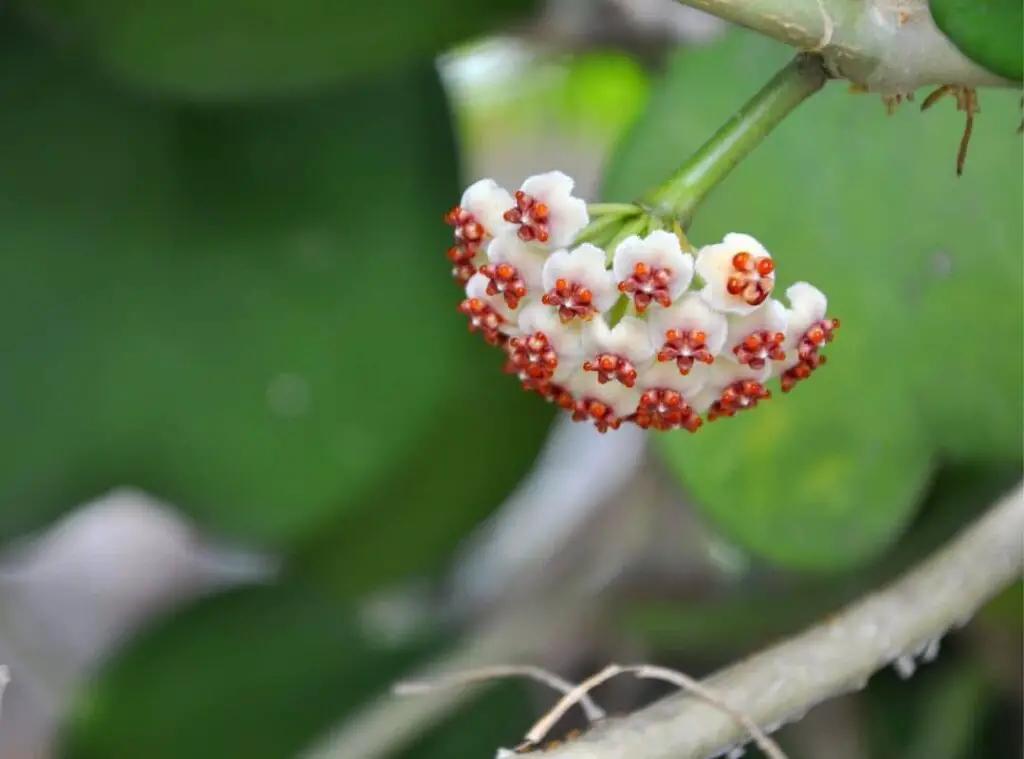
Related questions
Is succulent heart a succulent?
These are tropical succulent vines. These plants are part of the Dogbane family, Apocynaceae.
Does succulent heart need full sun?
They would like to thrive in natural bright full sunlight, but not in direct sunlight though.
Can succulent heart grow?
These are not known as fast growing plants. In fact, they are a slow growing set of plants. Usually, Hoya kerri can grow up to 10 feet in general given that they get all their basic requirement fulfilled
Does succulent heart like small pots?
They would prefer to grow tight in pots. That will allow them to become pot bound. Further it will help them to bloom vigorously too. .
Should I mist my succulent heart?
Yes. misting Hoya is one way to provide water to them. Therefore I would encourage misting them (mildly) .
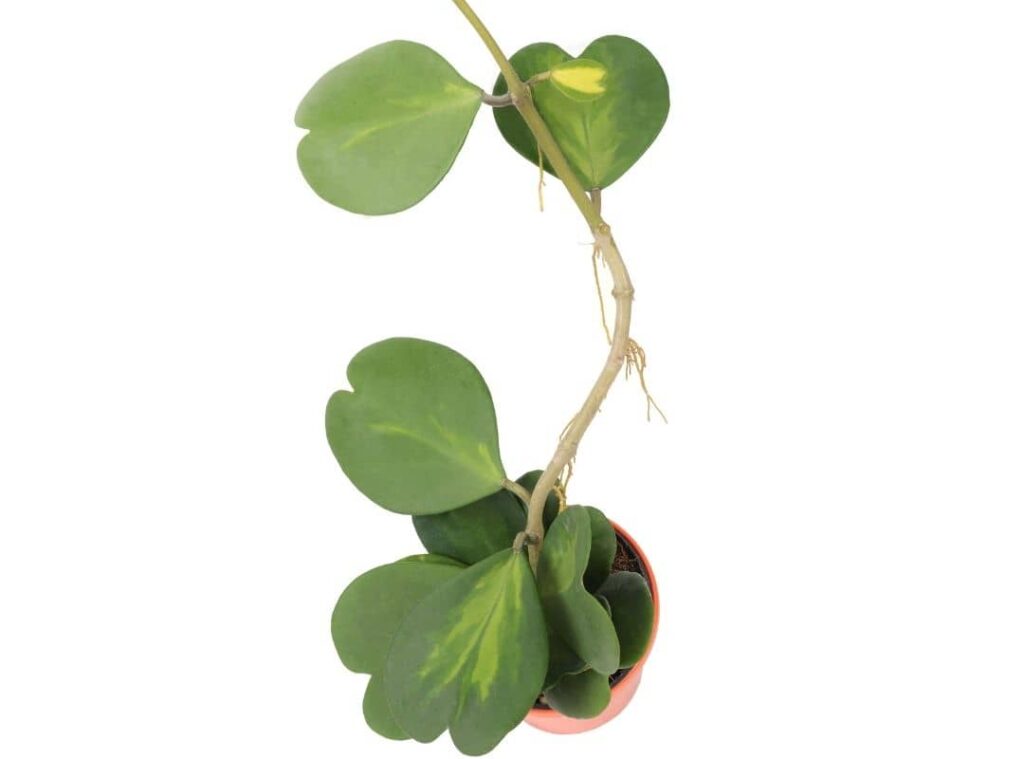
Conclusion
You need to be vigilant on three main aspects when growing these plants.
That is to provide them with bright natural sunlight, grow them in well-draining soil mix and water them moderately.
They are cute looking plants, and you could easily take care of them as well. So don’t delay and start growing these wonderful plants and get that amazing experience!
Read Next: Are There Weeds That Look Like Succulents? | Tips For A Beautiful Garden |
